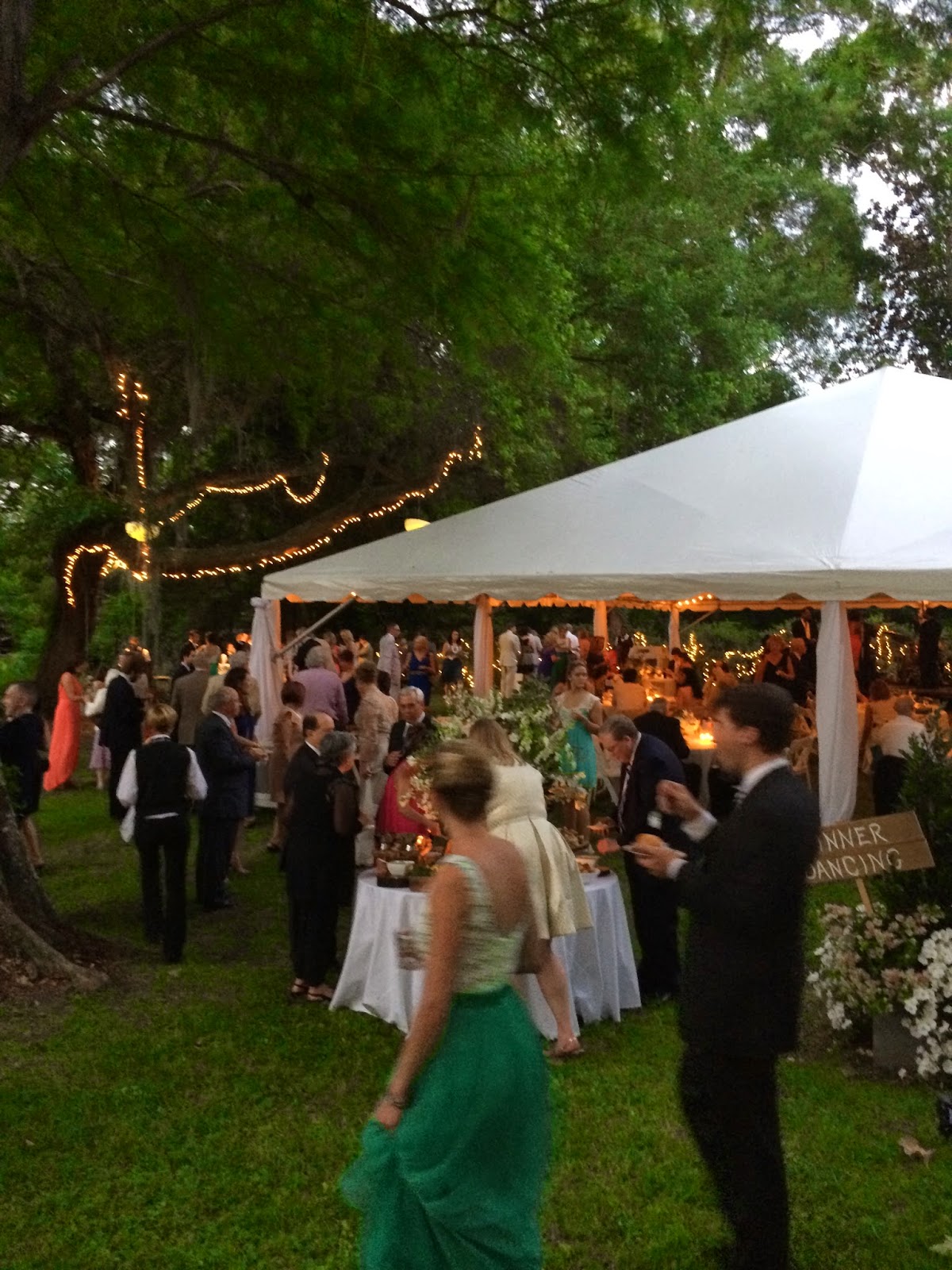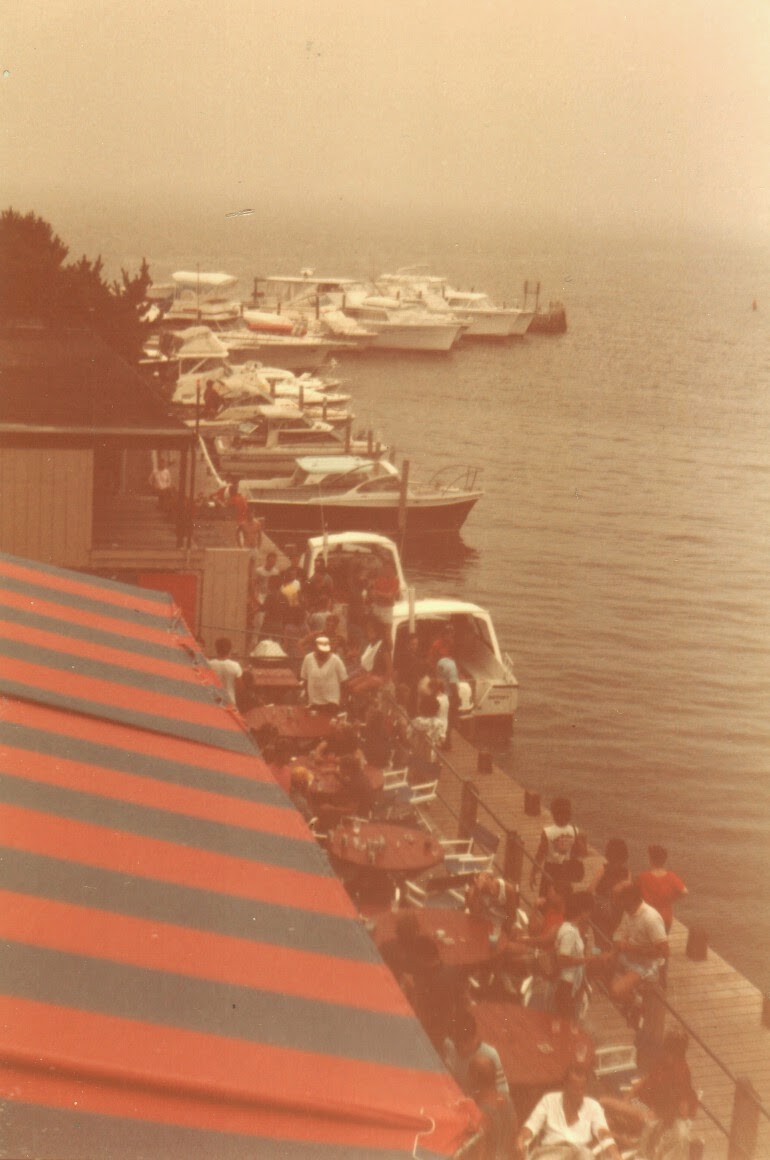It struck me as I listened to the waiter's inventory of fishy specials that every waiter under forty had a beard and that their grandfathers or, more likely their grandfather's gay brothers, all had facial hair, also. Gay clones, we called 'em then, I thought as I sipped my cocktail and, wonderful as it is to see the wheel of fashion revolving yet again, it is clear the tipping point – the point where individuality tips towards uniformity – has long been passed. Young men, generally speaking, have facial hair – unkempt or not – and their female cohorts, uniformly, have long straight hair and wear the same style print short shifts. Wondering aloud about why we are persuaded that uniformity is individuality wasn't, I knew, going to fly as a subject of conversation with the three HQ dandies sitting with me at table, so I reached for my cocktail again, whilst the waiter informed us about his personal favorites. A collective cringe affected even those checking in on Facebook. A waiter's personal favorite – there's a thought! A personal favorite? As silly piece of tautology as that often-spied "Private Residence" for aren't all favorites personal and all residences private?

A none-too-private residence, purportedly that of the Salvatore brothers in
The Vampire Diaries, surrounded by office towers, is nothing less than an atmospheric shell now that the family has dwindled, removed itself and left the house in the hands of an "events manager." With logs burning in the fireplace, it is easy to imagine the house as a character in a novel: perhaps Michael Innes's
The Open House – a mystery story where the hero, John Appleby, after his car breaks down on a deserted road, comes across a large house whose windows are illuminated, the front door wide open and the house empty. Better yet, this "living hall"in the picture below, despite being over-furnished in an Edwardian way, brings to mind the great Hall of Stanyon Castle in Georgette Heyer's
A Quiet Gentleman where the hero returning from the Peninsular wars is met by his estranged and unwelcoming family. This hall is, indeed, an opulently ordinary room, as conventionally decorated as all of its kind, but could be a place for any vampire with romantic sensibilities to have a quiet evening at home, on the Knole sofa, listening to wolf-song, sipping occasionally from a companionable vein, much as one might sip bourbon, and reading the
The Monk by M G Lewis, Horace Walpole's
The Castle of Otranto, Anne Radcliffe's
The Mysteries of Udolpho or, even, a family biography, fanciful though it is, by Abraham Stoker.
The Knole sofa seems to me to be the ideal for those of us who love to lay down whilst reading – almost a room within a room and in such a large high space one of the best draft excluders there is. There was a time my sofa, a Chesterfield, provided similar refuge from the howling
wolves black dogs, reading many an e-book male/male romance/mystery as I lay on it. Genre fiction, a term that always sounds acutely demeaning, has occupied me in the long watches day and night and I have come to appreciate its humane portrayals of the naturalness of love between males. Love is love.
If I were to give a list of genre fiction: mysteries; m/m romance; historical romance I would begin with three writers. The first, Michael Innes, whose detective stories are the most dexterously literate I've ever read. My favourite book of his,
Lord Mullion's Secret, is no detective story at all but a foxtrot through Englishness, character and erudition – a description that could be applied to all his stories. I adore them.
The second writer, Georgette Heyer, whose
Regency Buck I read first in the 1960s and reread again only this weekend, is perhaps more famous for her Regency Romances than for her detective stories of which she wrote eleven, or twelve if one counts
The Quiet Gentleman as a mystery set in the Regency period. Nowadays we'd call it a cross-over, I suppose – historical romance and mystery. All her mysteries are superb, witty, well-observed and occasionally downright funny. I'd cite
They Found Him Dead from 1937, the connected
Duplicate Death from 1951, and
Envious Casca from 1941 as the ones I enjoyed the most.
The third writer is Josh Lanyon: unknown to me until two years ago, I have since read most of what he has written and thoroughly appreciated his characterization, humaneness and humor. The Adrien English series of books – five interlinked stories of (without wishing to sound like a blurb writer) love, loss and redemption –
Fatal Shadows,
A Dangerous Thing,
The Hell You Say,
The Death of a Pirate King and
The Dark Tide, are the ones I would recommend anyone new to this genre to read.
The point to me in all this, is not that one is unshaven, wouldn't know tautology if it slapped one up the side of the head, or even whether one sips from vein or goblet, it is the creation of a coherent world – be it Jane Austen's small piece of ivory (two inches wide), or Shakespear's Journey's End where lovers meet – in which the characters can act out their stories. In genre fiction the world is not smaller and the past is not a foreign country where things are done differently.
Couch chair at Knole, Kent
"Stuffed and covered with crimson velvet. The cushioned headpieces are hinged to the arms, and adjusted with rachets. The upholstery if fixed with gilt nails and trimmed with silk thread fringe, overlaid with silver threads. The dating of this unique couch has been much disputed. I incline to c.1640 on the basis of entries in the 1630s in the furniture bills of items suppled to Queen Henrietta Maria (Appendix A15). I have not yet established the precise differences between a couch chair and a couch bed. Similar items were supplied by John Casbert, the French upholsterer to Charles II from 1660."
Quotation about Couch chair at Knole, Kent from
Upholsterers & Interior Furnishings in England 1530-1840, Geoffrey Beard, The Bard Graduate Center for Studies in the Decorative Arts by Yale University Press, New Haven and London, 1997.
Photo of Couch Chair from same.










































.JPG)













